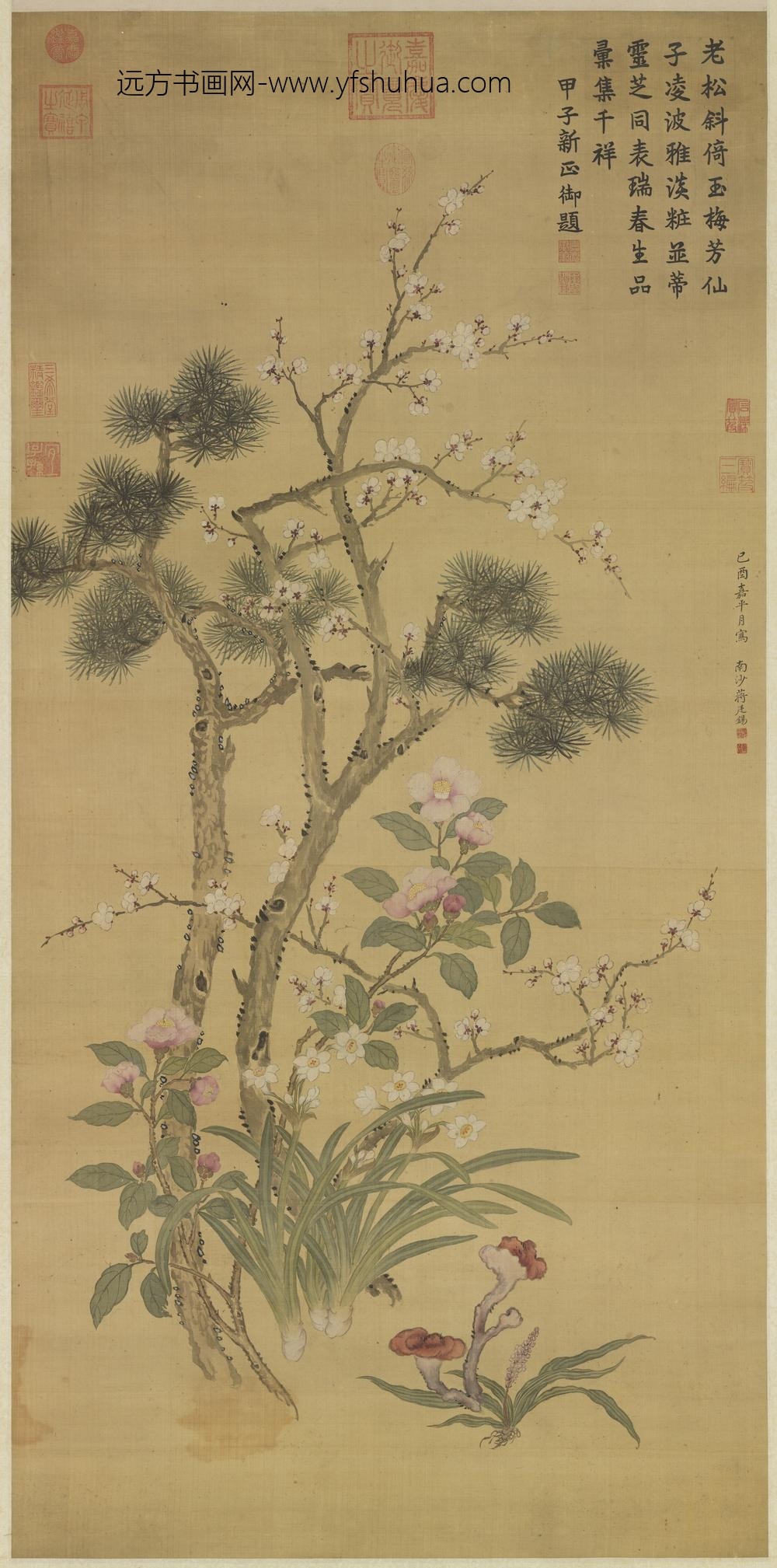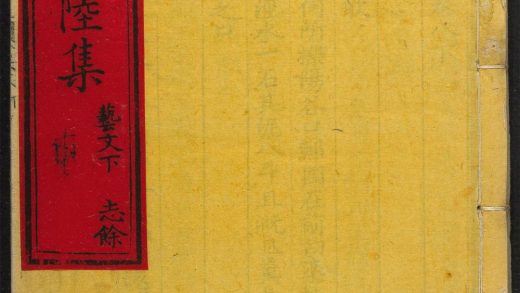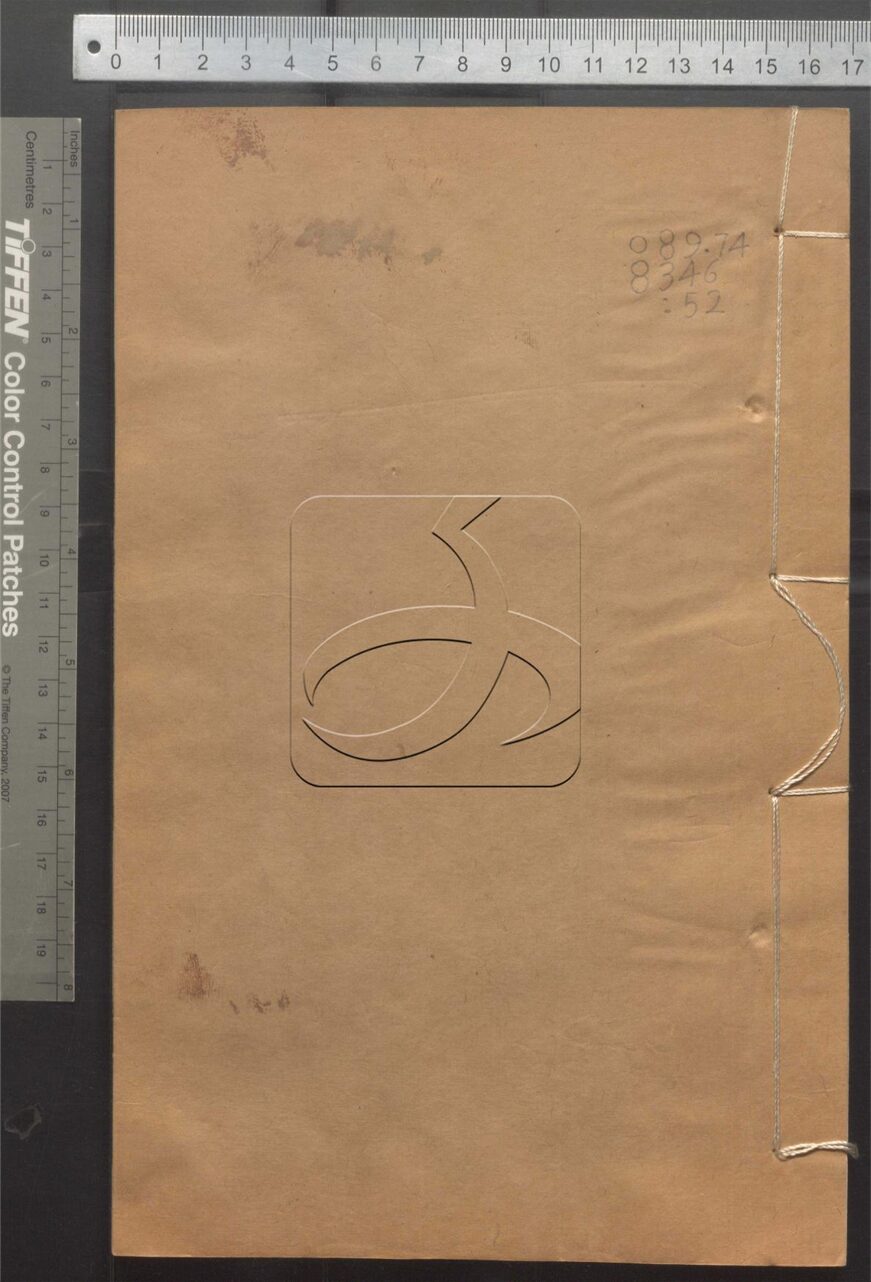【作品基本信息】
| 作者 | 蒋廷锡 |
| 品名 | 岁朝图轴 |
| 朝代 | 清代 |
| 文件大小 | 18.03MB |
| 分辨率(DPI) | 300×300 |
| 像素大小 | 1726×3483 |
| 尺寸(CM) | 14.61×29.48 |
| 创作时间 | 清世宗雍正七年(1729) |
| 作品数量 | 1 |
| 作品收藏 | 台北故宫博物院 |
| 图片格式 | 默认提供TIF和JPG两个版本 |
基本数据
| 藏品类型 | 绘画 |
| 品名 |
清蒋廷锡岁朝图轴 New Year Painting |
| 分类 | 绘画 |
| 作者 | 蒋廷锡 |
| 创作时间 | 清世宗雍正七年(1729) |
| 数量 | 一轴 |
典藏尺寸
| 【位置】 | 【尺寸】(公分) |
| 本幅 | 126×62.2 |
质地
| 【质地位置】 | 【质地】 |
| 本幅 | 绢 |
题跋数据
| 【题跋类别】 | 【作者】 | 【位置】 | 【款识】 | 【书体】 | 【全文】 |
| 作者款识 | 蒋廷锡 | 己酉(公元一七二九年)嘉平月写。南沙蒋廷锡。 | 楷书 | ||
|
印记: 蒋廷锡、朝朝染翰 |
|||||
| 题跋 | 清仁宗 | 本幅 | 甲子(公元一八0四年)新正御题 | 楷书 | 老松斜倚玉梅芳。仙子凌波雅淡妆。并蒂灵芝同表瑞。春生品汇集千祥。甲子(公元一八0四年)新正御题。 |
|
印记: 嘉庆御笔、艺与道兼 |
|||||
印记资料
| 【印记类别】 | 【印记】 |
| 鉴藏宝玺 | 周甲延禧之宝 |
| 鉴藏宝玺 | 宝笈三编 |
| 鉴藏宝玺 | 宣统御览之宝 |
| 鉴藏宝玺 | 嘉庆御览之宝 |
| 鉴藏宝玺 | 嘉庆鉴赏 |
| 鉴藏宝玺 | 石渠宝笈 |
| 鉴藏宝玺 | 三希堂精鉴玺 |
| 鉴藏宝玺 | 宜子孙 |
主题
| 【主题类别】 | 【主题(第一层)】 | 【主题(第二层)】 | 【主题说明】 |
| 主要主题 | 树木 | 松 | |
| 主要主题 | 花草 | 梅(白.红.蜡梅) | 白梅 |
| 次要主题 | 花草 | 水仙 | |
| 次要主题 | 花草 | 灵芝 | |
| 主要主题 | 花草 | 茶花 | |
| 其他主题 | 花草 | ||
| 主要主题 | 节令与二十四节气 | 年节 |
技法
| 【技法】 | 【技法细目】 |
| 没骨 | |
| 双钩 | |
| 苔点 |
参考数据
| 【类别】 | 【参考数据】 |
| 收藏着录 | 石渠宝笈三编(延春阁),第五册,页2227 |
| 收藏着录 | 故宫书画录(卷八),第四册,页99 |
| 收藏着录 | 故宫书画图录,第十一册,页57-58 |
| 内容简介(中文) |
蒋廷锡(公元一六六九-一七三二年),江苏常熟人。字扬孙,号酉君,又号西谷。官至文华殿大学士,工画花卉草虫,以逸笔写生,没骨花鸟画继承恽寿平风格。 绘松枝、梅萼、茶花、水仙、并蒂灵芝,均是初春节庆吉祥花卉。以工谨双钩填彩法画花朵,以疏放写意法绘枝干,衬托出花朵娇柔妍丽之形态。此图成于雍正七年(一七二九),上方则有嘉庆皇帝题句。 |
| 内容简介(英文) |
Chiang T’ing-hsi (style names Yang-sun and Hsi-chun; sobriquet Hsi-ku) was a native of Ch’ang-shu. As an official, he rose to the rank of Grand Secretary of the Wen-hua Hall. He also excelled at depicting insects-and-flowers, and he also painted from nature using a spontaneous manner. In terms of bird-and-flower painting in the “boneless” (wash) style, he followed in the style of Yun Shou-p’ing (1633-1690). Pine branches, plum blossoms, camellia, narcissi, and spirit fungi are all considered plants symbolic of an auspicious New Year. In this New Year painting by Chiang, he has carefully used outlines to delineate the blossoms and then filled them with colors. The branches, however, are rendered in a loose and spontaneous manner to provide a dramatic contrast with the delicate blossoms. This work is dated to 1729 and bears a congratulatory poem by the Yung-cheng emperor (r. 1723-1735) in the upper right corner. |
【作品展示】

清蒋廷锡岁朝图轴



